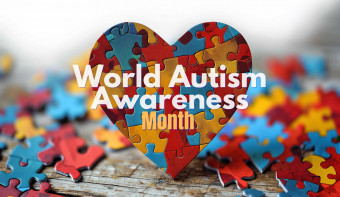About April Fools Day
April Fools' Day, also known as All Fools' Day is observed in many countries on 1 April.
The day is observed by trying to play a practical joke on a victim who becomes known as an April Fool. The practical jokes range from simple to elaborate. Whatever the trick, the prankster usually ends it by yelling to his victim, "April Fool!"
In certain countries, April Fools' jokes must be made before noon on 1 April otherwise it is the prankster who is the April Fool.
Origin of April Fool's Day
The origins of the customs of the day are shrouded in mystery. Some scholars believe it is likely to be a relic of festivities held to mark the vernal equinox. These celebrations of the first days of spring began on 25 March and ended on 2 April. Certainly, there is some evidence to suggest that 1 April was observed as a general festival in pagan Britain.
More commonly, the customs are associated with the switch to the Gregorian calendar in France during the sixteenth century.
Historically, many parts of the world celebrated 1 April as New Year's Day - due to its relationship with the start of Spring.
France was one of the first countries to adopt 1 January as their official New Year's Day, by decree of Charles IX in 1564. This was before the 1582 adoption of the Gregorian calendar.
The gifts and traditions which had been the feature of the 1st of April switched to January 1st. However, many people either refused to accept the change or did not hear about the news for several years. Those who still celebrated April 1 were seen as 'fools' by the general populace, and fair game to be the butt of pranks and tricks were known as a "poisson d'avril" or "April fish."
The traditions spread to England and Scotland in the eighteenth century and were brought to the American colonies by both the English and French.
April Fool's day around the world
In Scotland, April Fool's Day is celebrated over two days. Called Taily Day, The second day is devoted to pranks involving the buttocks. The "kick me" sign can be traced back to Taily Day.
Mexico's equivalent to April Fool's Day is on December 28th. Originally, the day was a sombre remembrance of the slaughter of the innocent children by King Herod, though, over the years, it has evolved into a light-hearted commemoration involving pranks and tricks.
In France, the April fool is known as 'poisson d'avril' (April fish). It is not known what exactly the fish refers to, but it may be related to the sun leaving Pieces (the fish) at the start of April. A part of the tradition in France was the placing of dead fish unknowingly on the backs of friends. Today, real fish have been replaced with fish-shaped paper shapes that children try to sneak onto the back of their friends' shirts. Shops and bakeries also offer special fish-shaped sweets.
The Dutch have separate reasons for celebrating the 1st of April. In 1572, the Netherlands were under Spanish rule. On April 1, 1572, Dutch rebels seized the town of Den Briel. This marked the start of the general civil rising against the Spanish across the Netherlands. The Duke of Alba was the commander of the Spanish army at the time, and he could not prevent the uprising from gathering momentum. Bril is the Dutch word for glasses, so it was said that "Alba lost his glasses." The Dutch commemorate this with jokes and humour on the first of April.
External links
- Top 5 April Fools' Day Pranks You Can Build in the Office
- BBC's spaghetti story (one of the most famous pranks)
- Top 100 April Fool's Day Hoaxes Of All Time
Similar Observances
Walpurgis Night
Read More
International Tartan Day
Read More
Raksha Bandhan 🛕
Read More
Other Observances on April 1st 2026
International Bird Day 🐦
Read More
World Autism Awareness Month
Read More
National One Cent Day
Read More









